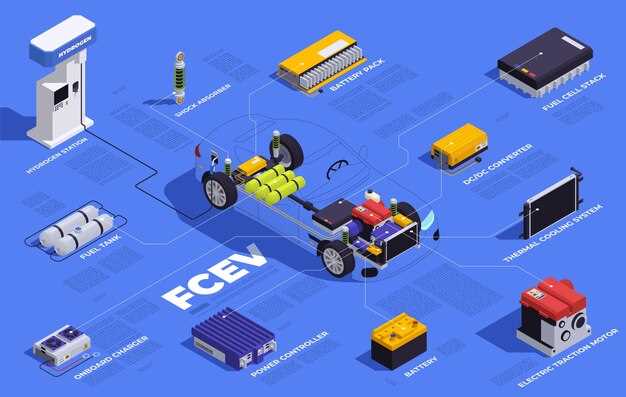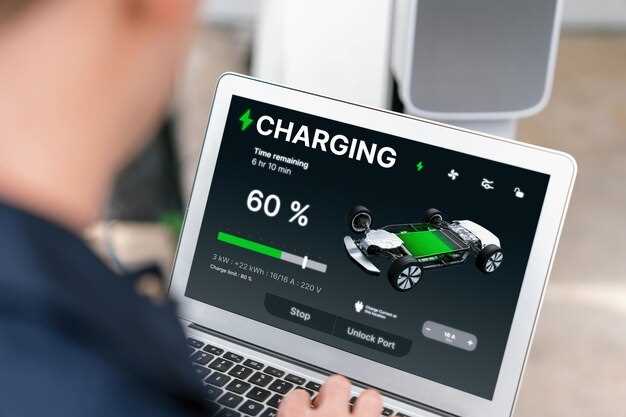
As the global automotive industry rapidly shifts towards electrification, China has emerged as a pivotal player in the development of advanced battery technologies. The country is not only the largest producer of electric vehicles (EVs) but is also at the forefront of innovations that enhance the performance, efficiency, and affordability of car batteries.
The evolution of battery technology in China is characterized by significant investments in research and development, leading to breakthroughs in lithium-ion and solid-state batteries. These innovations are critical as automakers seek to address consumer demands for longer driving ranges and faster charging times, while also adhering to stringent environmental regulations.
China’s commitment to building a sustainable battery future is evident in its strategic partnerships and the establishment of a robust supply chain for essential raw materials. From the refinement of battery chemistries to advancements in recycling processes, China is not only shaping its domestic market but also influencing the global standards for car batteries.
Advancements in Lithium-ion Battery Chemistry
In recent years, China has emerged as a leader in the development of lithium-ion battery chemistry, significantly influencing global energy storage solutions. The focus on enhancing battery performance has led to innovations that improve energy density, charging speed, and lifespan. One prominent advancement is the integration of silicon-based anodes, which can replace traditional graphite anodes. Silicon offers a much higher theoretical capacity for lithium storage, potentially increasing battery energy density by up to 50%.
Additionally, researchers in China are exploring novel electrolyte formulations that enhance ionic conductivity and stability. This includes the development of solid-state batteries, which use solid electrolytes instead of liquid ones, resulting in safer and more efficient energy storage systems. These advancements are critical for electric vehicles (EVs), where energy efficiency and longevity are paramount.
Another area of progress is in the use of advanced cathode materials. Chinese manufacturers are experimenting with high-nickel cathodes, which can provide higher voltage and energy efficiency. This shift addresses the growing demand for batteries that can support longer driving ranges for electric vehicles while reducing weight.
Furthermore, recycling technologies for lithium-ion batteries are gaining traction in China. Effective recycling processes not only mitigate environmental concerns but also ensure a sustainable supply of materials needed for battery production. This circular economy approach is essential as the electric vehicle market continues to expand.
In conclusion, advancements in lithium-ion battery chemistry championed by China are reshaping the future of energy storage. With continuous research and innovation, the country is not only enhancing battery performance but also paving the way for a more sustainable and efficient energy landscape.
Impact of Government Policies on Battery Production

Government policies play a crucial role in shaping the battery production landscape in China. The Chinese government has implemented a range of initiatives to support the rapid advancement of battery technology, particularly in the context of electric vehicles (EVs). These policies include subsidies for manufacturers, research and development grants, and tax incentives aimed at reducing production costs and encouraging innovation.
One significant aspect of these policies is the focus on sustainability. The Chinese government has established strict environmental regulations for battery production, which has prompted manufacturers to adopt cleaner technologies. This not only boosts China’s reputation on the global stage as a leader in eco-friendly technology but also aligns with the country’s long-term goal of reducing carbon emissions.
Furthermore, the government’s support extends to establishing a robust supply chain for essential raw materials, such as lithium and cobalt. By securing these resources, China enhances its competitiveness in battery production, ensuring that domestic companies can maintain a steady flow of materials needed for innovation in battery technology.
Investment in infrastructure, such as charging stations and battery recycling facilities, is another area where government policy has made a significant impact. These investments facilitate the widespread adoption of electric vehicles and promote technological advancements, consequently driving demand for advanced battery solutions.
Additionally, the government actively encourages collaboration between academic institutions and industry players, fostering an environment ripe for innovation. This collaboration has led to significant breakthroughs in battery technology, resulting in higher energy densities, faster charging times, and improved longevity.
Overall, the interplay between government policies and the battery production sector in China is a pivotal factor influencing the country’s technological progress. By continuing to support innovation through strategic policies, China is poised to solidify its position as a global leader in battery technology.
Comparative Analysis of Battery Recycling Techniques

The rapid growth of the electric vehicle (EV) market in China has led to an increased demand for efficient battery recycling techniques. As lithium-ion batteries become prevalent, the necessity for sustainable recycling methods grows. This analysis compares various techniques based on efficiency, environmental impact, and economic viability.
- Hydrometallurgical Processes:
This technique involves leaching metals from batteries using aqueous solutions. It allows for the recovery of valuable materials such as lithium, cobalt, and nickel. China’s investments in hydrometallurgical facilities demonstrate a commitment to reducing waste while meeting recycling demands.
- Pyrometallurgical Processes:
In this method, batteries are subjected to high temperatures to extract metals. While effective in retrieving certain elements, the energy-intensive nature of the process raises environmental concerns. China is working to improve energy efficiencies in these systems.
- Direct Recycling:
This innovative technique focuses on reusing battery components without breaking them down completely. It enhances the sustainability of the process and minimizes waste. Chinese companies are leading in the development of technologies that promote direct recycling approaches.
- Biological Recycling:
Emerging research in biological methods employs microorganisms to retrieve materials from spent batteries. Although still in its infancy, this technique showcases potential for low environmental impact and could complement existing methods. Chinese universities are at the forefront of this research.
Each technique presents its own advantages and challenges. Hydrometallurgy offers high recovery rates, while pyrometallurgy can be more energy-consuming. Direct recycling could pave the way for a greener future, and biological methods may revolutionize the industry in the long term. China’s strategy in battery recycling reflects its aim to balance technological advancement with environmental sustainability.
In conclusion, understanding these varied battery recycling techniques is crucial for China as it continues to innovate in battery technology and enhance sustainable practices in its EV market.


